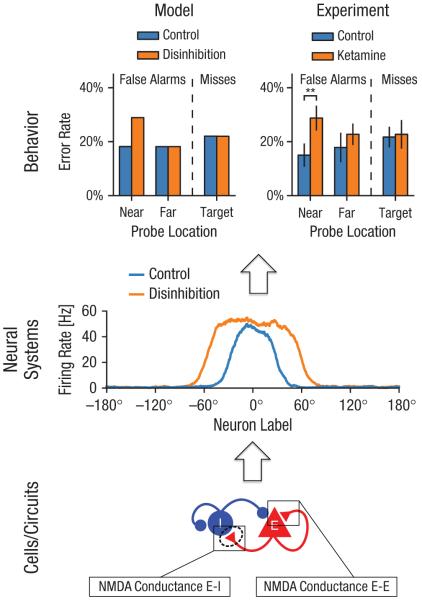Fig. 2.
Schematic of highlighted findings from a recent computational-modeling investigation. The bottom panel shows the manipulation of the N-methyl-D-aspartate glutamate (NMDA) receptor conductance on excitatory (E) and inhibitory (I) cells within a biophysically realistic computational model of working memory (complete details are presented in J. D. Murray et al., 2014). Because the model is able to capture effects at the microcircuit level (i.e., via firing traces), it generates a specific set of predictions that can be tested at the level of regions or neural systems. As shown in the middle panel, the specific prediction is a broadening of the working memory profile after decreased inhibitory drive onto E cells. This prediction could be tested with electrophysiology (M. Wang et al., 2013) or blood-oxygen-level-dependent functional MRI at the level of neural systems (Anticevic, Cole, et al., 2012; Anticevic, Gancsos, et al., 2012). Last, as shown in the top panel, the model generates a behavioral readout such that a specific profile of errors is predicted (top left), which can be tested with carefully optimized behavioral experiments (top right). Collectively, this approach has the potential to inform across-level understanding disturbances in schizophrenia from receptor to behavior. Nonetheless, this approach is limited because, at present, it can be extended to only a few well-characterized computational and behavioral processes, such as working memory (see main text for more extensive discussion). Asterisks indicate significance (***p < .001).

